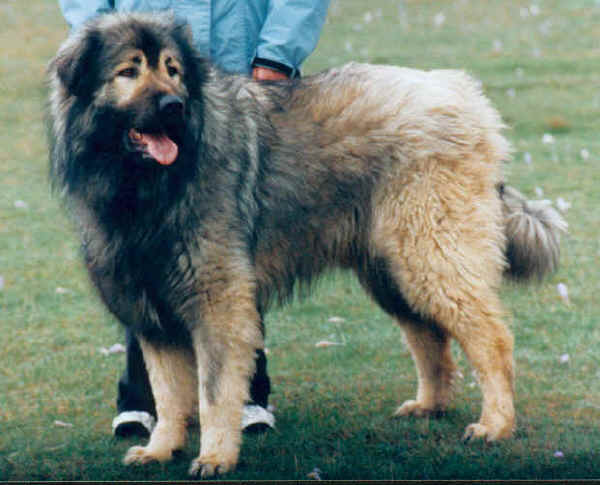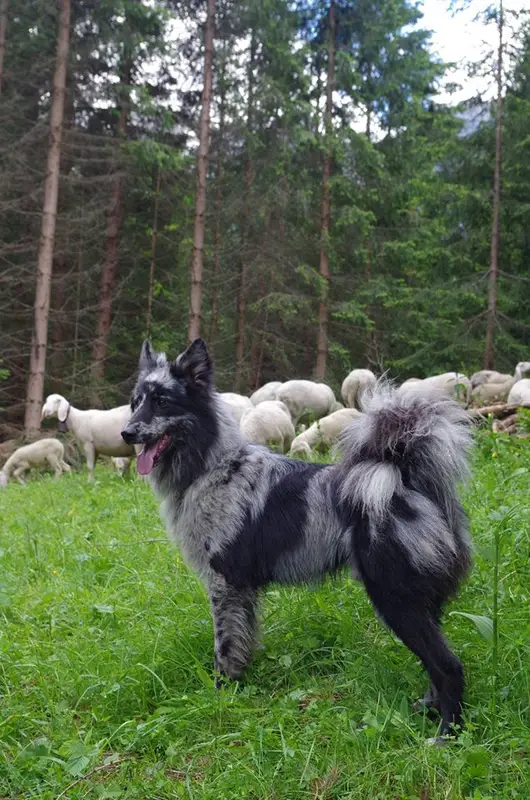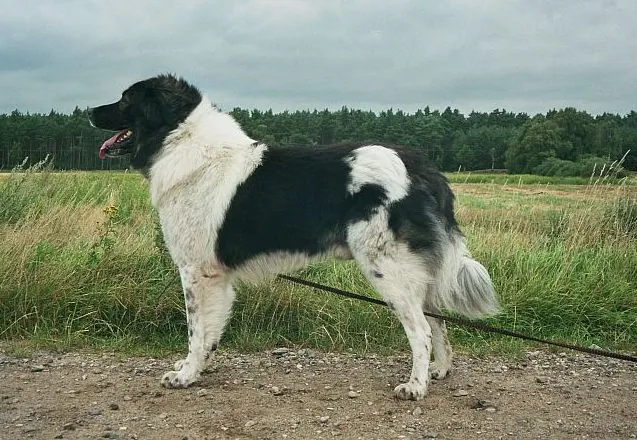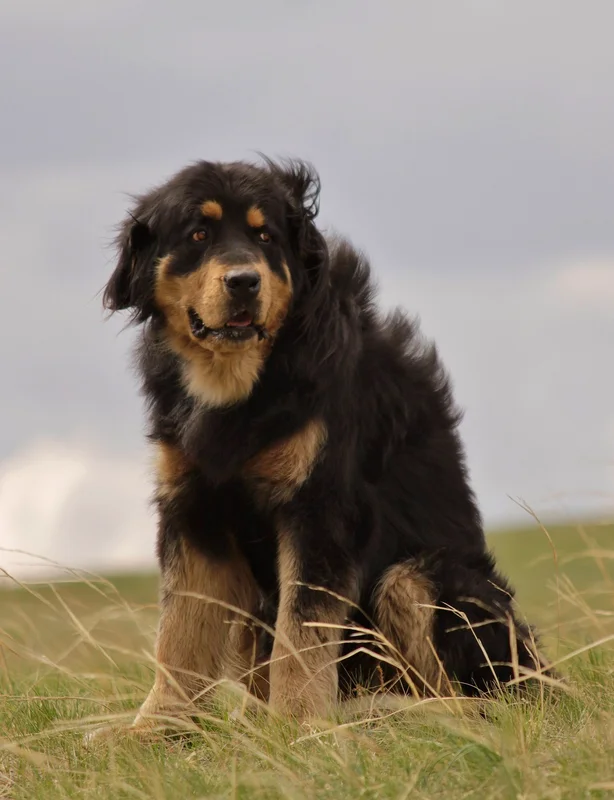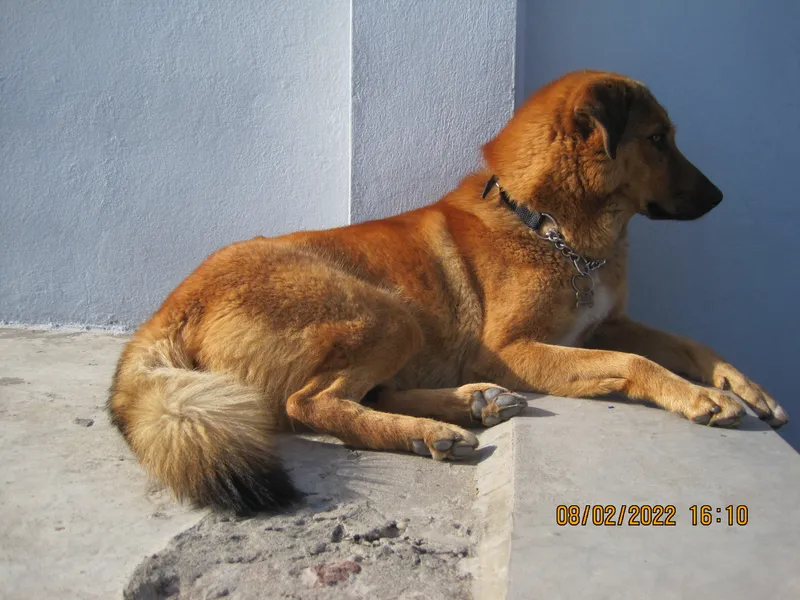Kuvasz
The Kuvasz is a large, loyal, and intelligent Hungarian breed known for its striking white coat and protective nature. Originally bred as a livestock guardian, they excel in roles requiring vigilance and companionship.
Overview
🐕Breed Overview
✨Key Traits
💡What Makes Kuvasz Special
The Kuvasz is distinguished by its impressive size and striking white coat, which serves a functional purpose in livestock guarding. Their loyalty and protective nature make them excellent guardians for both family and property.
They possess a keen intelligence that allows them to assess situations independently, a trait that can be both a blessing and a challenge for owners. Their strong instincts to protect can lead to territorial behavior, making early socialization essential.
Additionally, their playful and clownish demeanor adds a unique charm to their personality, endearing them to families who understand their needs and characteristics.
The Kuvasz is a majestic and ancient breed that hails from Hungary, known for its striking white coat and noble demeanor. Historically, these large dogs served as livestock guardians, protecting sheep and cattle from predators in the rugged landscapes of Hungary. Their origins can be traced back to the Magyar tribes, who brought them to the Carpathian Basin in the 9th century.
The Kuvasz is characterized by its dense double coat, which can range from wavy to straight, and its dark pigmentation, including a black nose and dark eyes that are almond-shaped. Females typically weigh between 70 to 90 pounds, while males range from 100 to 115 pounds, making them a substantial presence in any household. Despite their imposing size, the Kuvasz is known for its gentle and loyal nature, particularly towards its family.
They are intelligent and possess a unique sense of humor, often displaying playful antics well into adulthood. However, their independent spirit can pose challenges for training, requiring experienced handlers who can provide consistent guidance and socialization. While they are devoted companions, they can be aloof with strangers, making early socialization crucial to ensure they are well-adjusted.
Living with a Kuvasz requires commitment, as they thrive in environments where they have space to roam and explore. Regular exercise is essential to keep them physically fit and mentally stimulated. Grooming is relatively straightforward, with weekly brushing recommended to manage shedding, especially during seasonal changes.
Overall, the Kuvasz is a remarkable breed that excels as a guardian and companion. Their rich history, combined with their unique personality traits, makes them a cherished addition to any family that can meet their needs for training, exercise, and socialization.
🎉Fun Facts
Despite their guarding instincts, they can be gentle and affectionate with children in their family.
Kuvasz dogs have been featured in popular culture, including the film 'Homeward Bound II: Lost in San Francisco.'
The breed's name is believed to derive from a Turkish word meaning 'armed guard of the nobility.'
The Kuvasz has been a royal companion, often gifted to dignitaries by Hungarian kings.
They are known for their clownish sense of humor, often entertaining their families with playful antics.
Breed Characteristics
Family & Friends
Good Behavior
Get Up & Go
Household Harmony
Temperament & Personality
✨Key Traits
🐕Core Temperament
The Kuvasz is a devoted and protective breed, characterized by its strong instincts to guard its family and property. They are gentle with children in their family but can be wary of strangers.
Their independent nature means they may not always follow commands unless they respect their handler as a leader. This breed is known for its intelligence and problem-solving abilities, but they can also be stubborn, requiring consistent training and socialization.
With the right guidance, a Kuvasz can be a loyal and loving companion, making them well-suited for families who appreciate their unique qualities.
💫Personality Profile
The Kuvasz is a spirited and intelligent breed, known for its strong protective instincts and loyalty to its family. They are often described as independent thinkers, which can make training a challenge.
While they are affectionate with their loved ones, they may be reserved or aloof with strangers. Their natural guarding instincts mean they are vigilant and alert, often barking to warn of potential threats.
With proper socialization and training, a Kuvasz can be a well-mannered companion, but they require an experienced owner who can establish themselves as a confident leader. Their playful nature can shine through, especially in familiar settings, making them a joy to have around for active families.
🔊Vocal Tendencies
The Kuvasz is known for its vocal nature, often barking to alert its family of potential threats. While not every Kuvasz will bark excessively, many fulfill their guardian role through vocalizations.
They may bark at strangers, unusual noises, or when they perceive a threat to their family. Early socialization can help define what constitutes a threat, potentially reducing unnecessary barking.
However, owners should be prepared for some level of vocalization, especially if the dog is not properly socialized or trained to understand acceptable behaviors.
Affection & Social Traits
Energy & Activity
Communication Style
Care Requirements
🏃♂️Exercise Requirements
Daily Exercise
The Kuvasz is a large and active breed that requires regular exercise to maintain its physical and mental health. Ideally, an adult Kuvasz should engage in at least 60 to 90 minutes of exercise daily. This can include long walks, runs, or play sessions in a secure area.
Activities such as herding trials, agility training, or obedience classes can also provide excellent outlets for their energy and intelligence. Puppies should have shorter, more frequent exercise sessions to avoid overexertion, while senior dogs may require gentler activities to accommodate their changing energy levels. Regular exercise is crucial for preventing obesity, maintaining cardiovascular health, and reducing behavioral issues stemming from boredom or pent-up energy.
Insufficient exercise can lead to destructive behaviors, anxiety, and a host of health problems, making it essential for owners to prioritize their Kuvasz's activity needs.
Preferred Activities
🏠Living & Adaptability
Space Requirements
The Kuvasz is best suited for homes with ample outdoor space, such as a large yard or rural property. They thrive in environments where they can roam and explore, as they were bred to guard livestock over vast areas.
While they can adapt to living in a home with a smaller yard, it is crucial that they have access to regular outdoor exercise. Apartment living is not ideal for this breed due to their size and exercise needs.
Owners in smaller living situations must be diligent about providing daily exercise and mental stimulation to prevent boredom and anxiety.
Climate Preference
🍲Feeding Guide
Schedule
Food Types
Portion Size
Special Nutritional Needs
The Kuvasz requires a balanced diet that supports its large size and active lifestyle. Owners should avoid high-calorie diets for puppies to prevent rapid growth, which can lead to orthopedic issues.
It's essential to provide a diet rich in quality protein and avoid excessive fat. Supplements are generally not necessary unless recommended by a veterinarian.
Cooked bones should be avoided due to the risk of splintering.
✨Grooming Requirements
Grooming Overview
The Kuvasz has a dense double coat that requires regular grooming to keep it healthy and free of mats. Owners should brush their Kuvasz at least once a week, but more frequent brushing (every two to three days) is recommended during shedding seasons in spring and autumn.
A grooming rake or pin brush with rounded pins is ideal for maintaining the coat. To remove stubborn knots, a curry comb or large-toothed comb can be used.
The coat should not have an odor; any unusual smell may indicate health issues or poor diet. Regular grooming helps reduce shedding and keeps the coat looking its best.
Care Schedule
Brush every 2-3 days, bathe as needed, trim nails every two weeks.
Health Profile
⚕️Health Care
Regular veterinary care is essential for maintaining the health and longevity of a Kuvasz. Routine check-ups, vaccinations, and preventive treatments can help catch potential health issues early.
Owners should also be vigilant about their dog's diet and exercise regimen, as obesity can exacerbate health problems. Early detection and management of conditions like hip dysplasia can significantly impact the dog's quality of life and lifespan.
Health Issues Overview
⏳Average Lifespan
Genetic Factors
Genetics play a significant role in the Kuvasz's lifespan, with hereditary health issues such as hip dysplasia and hypothyroidism being common concerns. Responsible breeding practices that prioritize genetic diversity can help mitigate these risks.
Potential owners should seek breeders who conduct health testing and provide transparency about the lineage of their puppies. Understanding the genetic background of a Kuvasz can help owners make informed decisions and reduce the likelihood of inherited health problems.
Living Conditions
The Kuvasz thrives in environments that allow for ample exercise and mental stimulation. Access to outdoor space is crucial for their well-being, as they were bred to roam and protect livestock.
Living in a rural or suburban setting with a secure yard is ideal. Social interactions with family members and other pets can enhance their quality of life, while a lack of engagement may lead to behavioral issues.
Cold climates are preferable, as they are more comfortable in cooler temperatures due to their thick coat.
🏥Common Health Issues
Hip Dysplasia
Warning Signs
🔬Diagnosis
Veterinarians typically diagnose hip dysplasia through physical examinations and X-rays.
💊Treatment
Weight management, physical therapy, and in severe cases, surgical intervention.
📝Management Tips
Maintain a healthy weight, provide joint supplements if recommended, and avoid excessive jumping or rough play during puppyhood.
Hypothyroidism
Warning Signs
🔬Diagnosis
Blood tests to measure thyroid hormone levels.
💊Treatment
Lifelong thyroid hormone replacement therapy.
📝Management Tips
Regular veterinary check-ups and medication as prescribed.
🛡️Preventive Care
🔬Hip Evaluation
Evaluates the hip joints for dysplasia and other abnormalities, crucial for large breeds like the Kuvasz.
📅 Every 1-2 years, starting at 2 years of age.
🔬Thyroid Function Test
Measures thyroid hormone levels to detect hypothyroidism, which is common in the breed.
📅 Annually after 5 years of age or if symptoms arise.
🔬Elbow Evaluation
Assesses elbow joints for dysplasia, which can affect mobility and quality of life.
📅 Every 1-2 years, starting at 2 years of age.
Training
🧠Intelligence & Trainability
💪Work Drive
The Kuvasz has a strong work drive, stemming from its history as a livestock guardian. They thrive when given tasks that engage their intelligence and physical abilities.
Activities such as herding, obedience training, and agility can provide the mental stimulation they require. Without sufficient mental and physical engagement, a Kuvasz may become bored and exhibit undesirable behaviors.
Owners should seek to provide regular challenges and opportunities for the dog to utilize its natural instincts and skills.
⚠️Training Considerations
Training a Kuvasz can present challenges due to their independent nature and strong guarding instincts. They may exhibit stubbornness and a reluctance to obey commands unless they respect their handler as a leader.
Socialization is crucial, as they can be wary of strangers and other dogs. Owners should be prepared to invest time in consistent training and positive reinforcement methods.
Early socialization with various people, environments, and animals is essential to mitigate potential aggression or fearfulness. Additionally, their instinct to protect can lead to barking or territorial behavior, which may require management to ensure a harmonious household.
📝Training Tips
To effectively train a Kuvasz, owners should employ positive reinforcement techniques, such as treats and praise, to encourage desired behaviors. Consistency is key; commands should be clear and repeated regularly.
Training sessions should be kept short and engaging to maintain the dog's interest. Socialization should begin early, exposing the puppy to various situations, people, and animals to build confidence and reduce wariness.
Owners should also establish themselves as calm, assertive leaders, setting clear boundaries and expectations to foster respect and obedience. Patience is essential, as the Kuvasz matures slowly and may take time to fully grasp commands.
History & Heritage
📜Origin Story
The Kuvasz is believed to have descended from ancient Tibetan dogs, brought to Hungary by the Magyar tribes. These dogs were initially used for guarding livestock and protecting property.
' Throughout history, the Kuvasz has been associated with the Hungarian aristocracy, serving as both a loyal companion and a formidable protector. The breed's reputation for bravery and loyalty was solidified during the reign of King Matthias I, who kept a large kennel of Kuvasz dogs.
Despite facing significant challenges during the World Wars, the breed has persevered, thanks to the efforts of dedicated breeders who have worked to maintain its unique characteristics and qualities.
⏳Development History
The Kuvasz's origins can be traced back to ancient times, with evidence suggesting that it has been present in Hungary since the Magyar tribes settled in the Carpathian Basin around 896 AD. The breed was developed as a livestock guardian, adapting to the needs of shepherds in the region.
Over the centuries, the Kuvasz gained popularity among the nobility, particularly during the reign of King Matthias I, who recognized its protective qualities. The breed faced near extinction during the World Wars, but dedicated breeders worked to revive it, leading to its recognition by the AKC in 1935.
Today, the Kuvasz remains a symbol of Hungarian heritage and is valued for its guarding abilities and companionship.
🛡️Purpose & Historical Role
Originally bred as a livestock guardian, the Kuvasz has served various roles throughout history, including as a hunting companion and a protector of estates. Its guarding instincts have made it a valuable asset for farmers and ranchers, ensuring the safety of livestock from predators. In modern times, the Kuvasz is also cherished as a family companion, known for its loyalty and protective nature.
🏺Cultural Significance
The Kuvasz has a rich history in Hungary, where it has been revered as a noble guardian of livestock and property. Historically associated with the Hungarian aristocracy, the breed was often gifted to dignitaries and was a trusted companion of King Matthias Corvinus in the 15th century.
Its role as a protector of sheep and cattle has made it an integral part of Hungarian culture, symbolizing loyalty and strength. The breed's presence in literature and art further underscores its significance in Hungarian heritage, and it continues to be celebrated as a national treasure.
Conservation Status
This breed is less common but has stable populations in certain regions.
